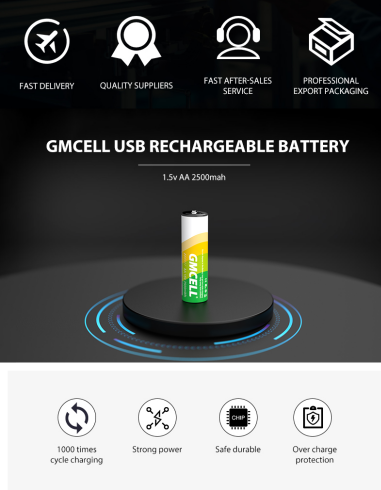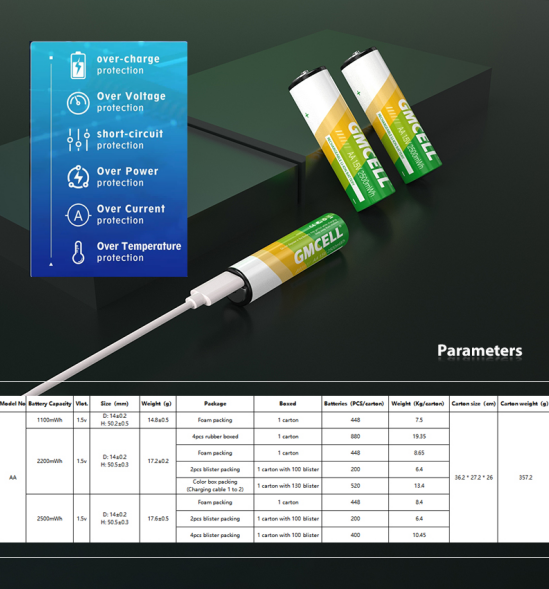In the era of portable electronics, USB rechargeable batteries have become indispensable, offering a sustainable and versatile power solution. To maximize their performance, lifespan, and overall value, it is essential to adopt proper storage and maintenance practices. This guide outlines meticulous strategies for preserving the integrity and extending the usability of your USB rechargeable batteries.

 **Understanding Battery Chemistry:**
**Understanding Battery Chemistry:**
Before diving into storage and maintenance, it’s crucial to acknowledge that USB rechargeable batteries typically employ Lithium-ion (Li-ion) or Nickel-Metal Hydride (NiMH) chemistry. Each has unique characteristics that influence how they should be handled.
**Storage Guidelines:**
1. **Charge State:** For Li-ion batteries, it is recommended to store them at a charge level of around 50% to 60%. This balance prevents over-discharge damage during long-term storage and minimizes degradation due to high voltage stress at full charge. NiMH batteries, however, can be stored fully charged if they are to be used within a month; otherwise, they should be partially discharged to around 30-40%.
2. **Temperature Control:** Both Li-ion and NiMH batteries perform best when stored in a cool, dry place. Aim for temperatures between 15°C to 25°C (59°F to 77°F). Elevated temperatures can expedite self-discharge rates and degrade battery health over time. Avoid freezing conditions as well, as extreme cold can harm battery chemistry.
3. **Protective Environment:** Store batteries in their original packaging or a battery case to protect them from physical damage and short-circuiting. Ensure that contact points are insulated to prevent accidental activation or discharge.
4. **Periodic Charging:** If storing for extended periods, consider topping up the charge every 3-6 months for Li-ion batteries and every 1-3 months for NiMH batteries. This practice helps maintain battery health and prevents deep discharge states that can be detrimental.
**Maintenance Practices:**
1. **Clean Contacts:** Regularly clean battery terminals and USB ports with a soft, dry cloth to remove dirt, dust, and corrosion that could interfere with charging efficiency or connectivity.
2. **Use Appropriate Chargers:** Always charge with the manufacturer-recommended charger to ensure compatibility and prevent overcharging, which can damage the battery. Overcharging can lead to overheating, reduced capacity, or even battery failure.
3. **Monitor Charging:** Avoid leaving batteries unattended while charging and disconnect them once fully charged. Continuous charging beyond the饱和 point can harm the battery’s longevity.
4. **Avoid Deep Discharge:** Frequent deep discharges (draining the battery below 20%) can shorten the overall lifespan of rechargeable batteries. It is advisable to recharge before reaching critically low levels.
5. **Equalization Charge:** For NiMH batteries, occasional equalization charges (a slow charge followed by a controlled overcharge) can help balance cell voltages and improve overall performance and longevity. However, this is not applicable to Li-ion batteries.
**Conclusion:**
Proper storage and maintenance are instrumental in preserving the health and longevity of USB rechargeable batteries. By adhering to these guidelines, users can optimize their batteries’ performance, reduce replacement frequency, and contribute to a more sustainable use of resources. Remember, responsible care not only extends battery life but also safeguards the environment by reducing waste and promoting the efficient use of energy.
Post time: May-25-2024




